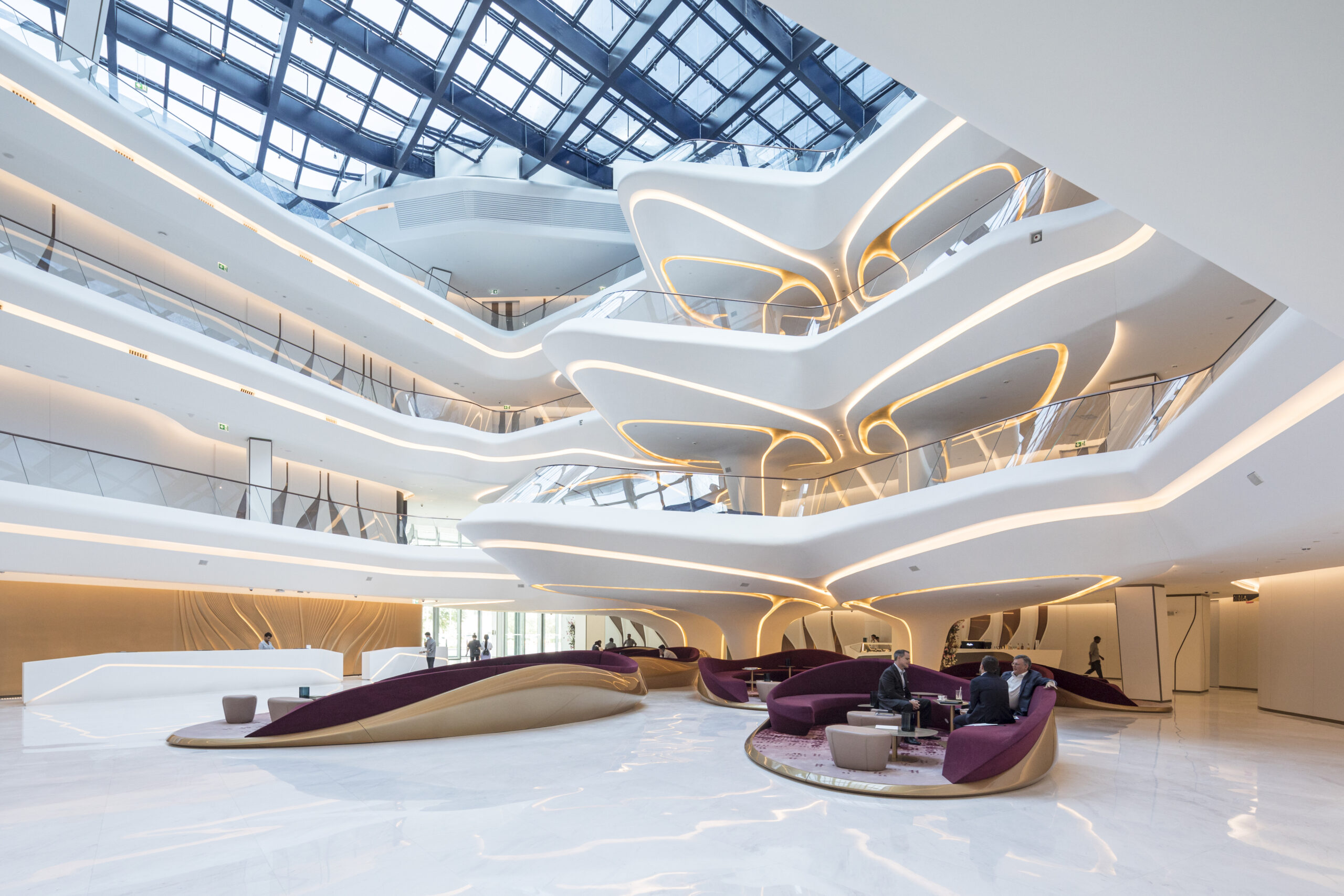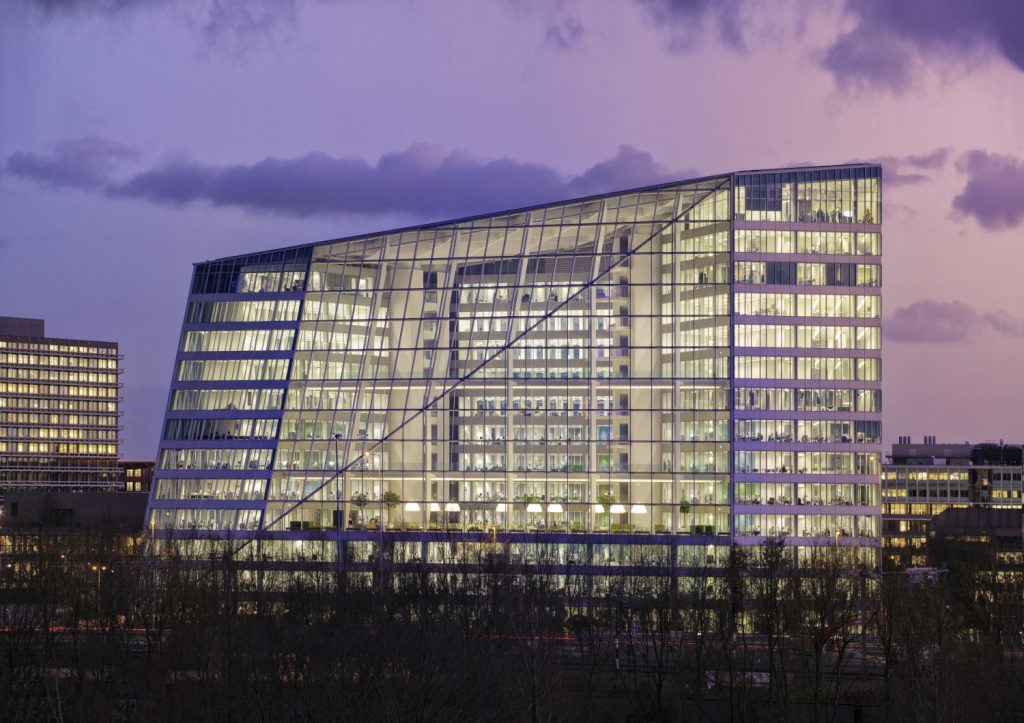Architects: Want to have your project featured? Showcase your work by uploading projects to Architizer and sign up for our inspirational newsletters.
There’s a moment in Doctor Strange where the Ancient One flicks Stephen Strange’s astral form out of his body, and suddenly, he’s tumbling through alternate dimensions. Skyscrapers bend, cities multiply and infinite versions of himself spiral past, each slightly different, each existing at the same time. In some of the more recent Spider-Man adaptations, Peter Parker (or Miles Morales, depending on what you’re watching) swings across New York only to realize he’s not the only one there. There are many of him, each from a different universe, each experiencing the same city in a completely different way.
The idea is simple. One place, multiple realities, all unfolding at once.
In this world of overlapping timelines, somewhere, there would be another version of you reading this article but with slightly better posture. This is the closest analogy to what’s happening in architecture right now.
You step into a museum to see a particular exhibition. Another visitor, walking the exact same path, experiences a completely different exhibition. You check into a hotel where the lobby, the lighting, and even the artwork on the walls shift based on who is present and their preferences.
For all our lives, buildings have played by certain rules. A space was one thing at a time. A store was either open or closed. A stadium was either full or empty. A park and its various plant life were defined by the seasons. Even flexible spaces, like multi-use theaters or pop-up retail, operate within a single physical reality. That assumption is now collapsing.
The rise of phygital architecture — where physical space blends with digital augmentation — has shattered the idea that a building or place must exist in just one form at a time. Digital overlays, seen through devices, screens and headsets, mean that it could be winter where we are, but our display allows us to experience a space as though it is the height of summer.
Mori Art Museum by Gluckman Mayner Architects. Tokyo
The Mori Art Museum in Tokyo has experimented with digital-physical exhibition hybrids, such as MAM Digital: Imaginary Landscapes, which merged real-world exhibits with interactive, AR-enhanced digital layers. While the museum itself remains a physical space, exhibitions are increasingly integrating real-time digital augmentation that allows visitors to experience different layers of content depending on how they interact with the space.
In spaces like this, it’s possible for remote audiences to access a completely different version of the same show, with alternate sequencing, enhanced visuals, and interactive digital layers that respond to their engagement. Unlike during COVID-19 times when these types of exhibitions first started gaining traction, becoming online experiences when visits to the physical sites were restricted, now, you can still experience the architecture in person while the exhibition is shown on screen.
Incorporating user data can take this idea even further. Nike’s House of Innovation in Seoul is designed as a shape-shifting retail experience. The store isn’t simply designed to showcase products; it reacts to its visitors. RFID tags track which items a customer picks up, adjusting nearby screens to display product details, styling suggestions, or limited-edition drops available only at that moment. In some areas, mirrors transform into interactive displays so shoppers can customize their purchases in real-time. The store adapts to who is in it, what they’re doing, and even what they might like based on their previous purchases.

Opus by Zaha Hadid Architects, Dubai, United Arab Emirates | Photos by Laurian Ghinitoiu
Hotels, always spaces that have analyzed guest data to curate seamless experiences, are beginning to apply similar ideas. At the Parkroyal Collection Marina Bay in Singapore, digital installations throughout the hotel, such as sensors, make changes in things like temperature and lighting based on guest movement and hotel occupancy levels. Nowhere is it clearer than at ME Dubai, housed inside the Opus by Zaha Hadid Architects. From the moment guests check-in, AI-driven concierge systems personalize their stay, while the building’s smart rooms also adjust lighting and temperature based on individual preferences. We could soon see this personalization develop into artwork and material surfaces that change per guest.
All of this points to a shift in architectural thinking and a larger trend in which spaces are being designed to operate in parallel states. But this evolution of our spaces raises the question: if two people can experience the same space in completely different ways, is it still the same place?
Cities are already embedding these real-time responsive elements, too. Singapore’s pedestrian tracking system adjusts lighting, wayfinding and traffic flow based on density — if certain areas become overcrowded, digital signage redirects foot traffic to alternative routes. While in Seoul, AI-driven kiosks allow street vendors to book and reconfigure public space, meaning the city’s commercial landscape is constantly reshaping itself to what visitors need and want most but meaning no two visits would likely be the same.
With all this, it looks as though the next evolution of phygital architecture won’t be more digital layers or overlays. Designing buildings that actively learn, evolve and optimize themselves over time is the new goal.
The Al Bahr Towers in Abu Dhabi, designed by Aedas Architects, was one of the first to feature a kinetic façade that responds to sunlight, automatically opening and closing to reduce heat gain and glare. The panels adjust throughout the day, optimizing internal temperatures without additional energy consumption.
While in Amsterdam, The Edge, designed by PLP Architecture, is one of the most advanced self-optimizing office buildings in the world. It uses a network of over 28,000 sensors to track desk usage, air quality and occupancy, automatically adjusting lighting, temperature, and workspace assignments in response to real-time data. Employees work in an environment that continuously adapts to their needs.
For architects, the change demands a completely new approach. Design form and function are not necessarily intertwined or static any longer, how space behaves, adapts, and reconfigures itself will depend upon the realities of individual participants and designing to accommodate that is incredibly complex.
None of this is speculative. The next generation of cities and buildings are already being built. And just like in the multiverse, there is no going back.
Architects: Want to have your project featured? Showcase your work by uploading projects to Architizer and sign up for our inspirational newsletters.

